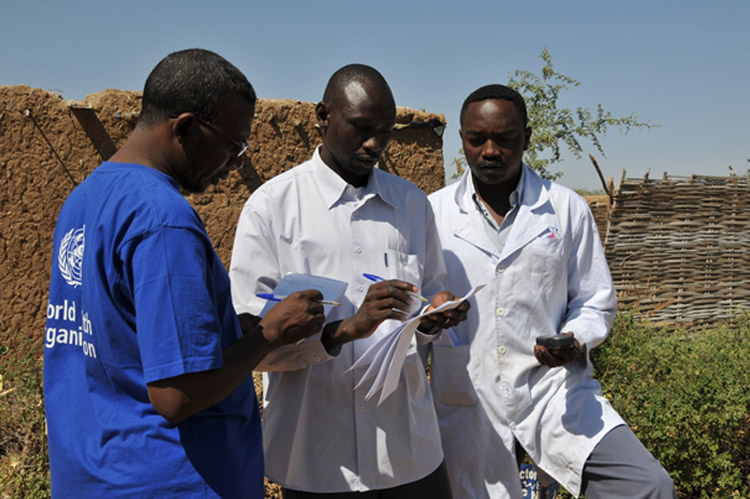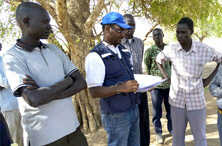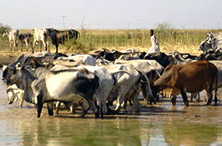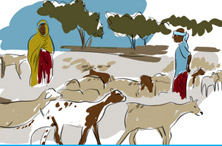Rift Valley fever
 WHO staff and health workers respond to an outbreak of Rift Valley fever in Sudan, 2007 (Photo: WHO).
WHO staff and health workers respond to an outbreak of Rift Valley fever in Sudan, 2007 (Photo: WHO).
Rift Valley fever (RVF) is a viral zoonosis that primarily affects animals but can also infect humans. Infection can cause severe disease in both animals and humans, with symptoms ranging from a mild flu-like illness to severe haemorrhagic fever that can be lethal. The disease also results in significant economic losses due to death and abortion among RVF-infected livestock.
The majority of human infections result from direct or indirect contact with the blood or organs of infected animals. The virus can be transmitted to humans through the handling of animal tissue during slaughtering or butchering, assisting with animal births, conducting veterinary procedures, or from the disposal of carcasses or fetuses. Human infections have also resulted from the bites of infected mosquitoes.
In 1977 an explosive outbreak of RVF was reported in Egypt, where the virus was introduced via infected livestock trade along the Nile irrigation system. Following infected livestock trade from the horn of Africa, in 2000, RVF spread to Saudi Arabia and Yemen, marking the first reported occurrence of the disease outside the African continent and raising concerns that it could extend to other parts of Asia and Europe. Subsequent outbreaks in the Region have included Egypt in 2003 and Sudan in2007-2008.
Prevention measures for RVF include sustained animal vaccination, restricting movement of infected livestock, an active animal health surveillance system to detect new cases, public health messages to raise awareness, and reducing breeding sites for mosquitos.
For more severe human cases of RVF, the predominant treatment is general supportive therapy. Although no human-to-human transmission of RVF has been reported, as for managing any viral hemorrhagic fevers, proper infection control in health care setting is warranted.











